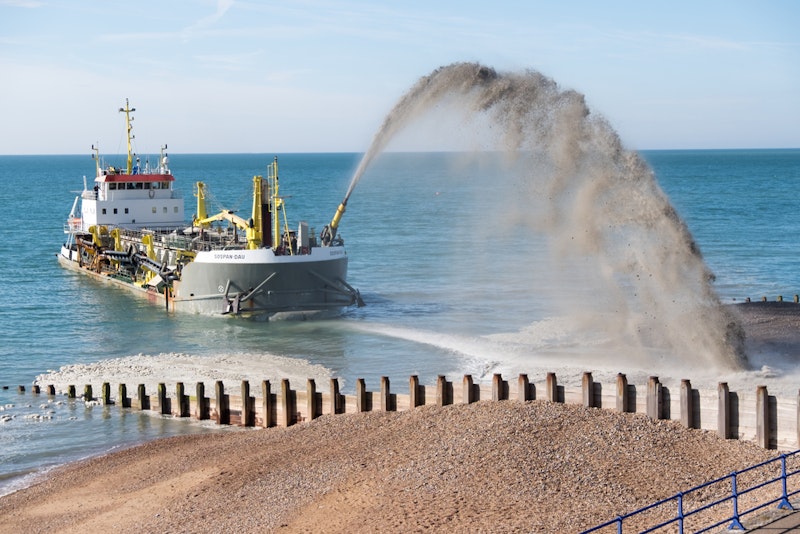Study Notes
GCSE Geography | Coastal Management: Soft Engineering (Coastal Landscapes 11)
- Level:
- GCSE
- Board:
- AQA, Edexcel, OCR, Eduqas
Last updated 29 Apr 2024
Many coastlines are protected by soft engineering - this is using strategies that work with nature. They are cheaper than hard engineering solutions, look more attractive, but are usually less effective against erosion and flooding.
Beach nourishment
Beach nourishment simply means replacing lost sediment - it is also known as beach replenishment. It is important to replace lost sediment because a wider beach means that fewer waves reach the back of the beach as there is more sand to slow the waves down through friction. The beach absorbs wave energy, therefore reducing the rate of erosion.
There are two main ways to replace lost sediment...
- Beach recharge - sediment is dredged from the sea bed and pumped on to the beach - bulldozers are then used to spread out the sand across the beach. This usually happens every 5-10 years
- Beach recycling - sediment is collected from where it has built up down-drift, and returned up-drift, using large trucks. This usually happens twice a year
Advantages
- wider beaches attract tourists - good for local economy
- protects local people along the seafront from coastal flooding
- wider beaches absorb more wave energy - which puts less pressure on sea wall, reducing maintenance costs
- looks natural and improves the look of the beach
Disadvantages:
- beach nourishment can take several weeks - during this time people cannot use large areas of the beach
- not as cheap as many people believe - hiring a dredger and bulldozers is expensive, and it needs to be repeated regularly

Beach reprofiling
Beach reprofiling uses existing sediment from the beach to artificially re-shape the beach after destructive waves have removed sand and shingle. In spring, bulldozers are used to move sediment back up the beach following winter storms. This process ensures that the beach remains large enough to provide effective protection against erosion.
Advantages:
- having a bigger beach protects against erosion, so residents feel safer
- much less expensive than repairing flood damage (about £30 million over 25 years)
- looks natural
Disadvantages:
- bulldozers restrict access to the beach - especially during the winter when beaches are popular with dog walkers
- major re-profiling can be expensive
- the beach is often given a steep and high crest to protect the coastline against waves more effectively, however this can look unnatural, and can restrict access to the sea line for some beach users

Sand dune regeneration
Sand dune regeneration means either restoring existing dunes or artificially creating new ones. There are several ways this can happen...
- planting vegetation (such as marram grass) so the long roots can bind the sand together
- fencing the dunes off to stop them being trampled whilst they become established - the fences also encourage sand to collect against them
- building 'sand traps' to catch wind-blown sand
- adding extra sand to wind eroded dunes, which can then be shaped into gently sloping dunes
It is important to regenerate sand dunes as they provide a physical barrier between the sea and land. Sand dunes protect against erosion and flooding by absorbing water and wave energy.
Advantages:
- established sand dunes protect the land behind them - they are often popular walking areas (e.g. pine woodlands)
- sand dune planting projects are small-scale so are cheap (they are also usually carried out by volunteers from local wildlife trusts
- maintains important wildlife habitats, including birds and lizards
Disadvantages:
- often involves fencing large areas of the beach off - this can have an impact on tourism
- has to be carefully managed - checked regularly to ensure that dunes are stabilising
- sometimes fertilisers are applied to help vegetation grow quicker - this can impact wildlife ecosystems
- measures put in place to prevent damage from tourism are expensive, e.g. wooden boardwalk, fire warnings, clearing areas for firebreaks, etc
- sand dunes are dynamic ecosystems - even when they are established they are not particularly stable and can be damaged during storms, which will take a few years to recover from

You might also like

3 great simulation games for geography lessons
2nd February 2016

Is Flooding in Essex Linked to Antartica?
16th August 2017

